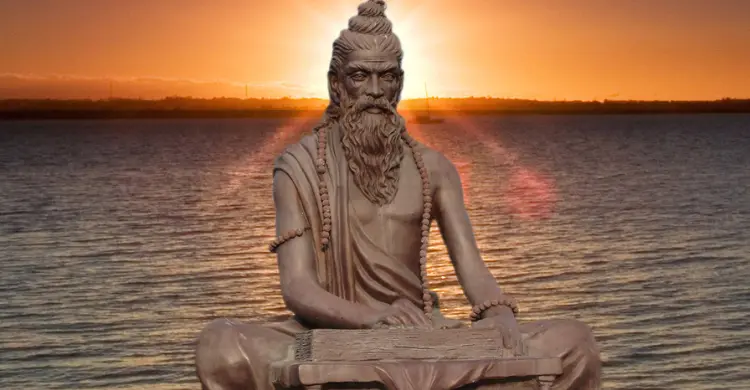Who Is Believed To Be The Father Of Yoga – Discover the Surprising Answer!
Patanjali is believed to be the father of yoga, known for writing the Yoga Sutras, which systematized yoga philosophy and practice.
In this article, we will explore the origins of yoga and the key figure who played a crucial role in shaping it
Who Is Believed To Be The Father Of Yoga?

Yoga is an ancient practice that connects the mind, body, and spirit through physical postures, breathing techniques, and meditation. With its roots stretching back thousands of years in ancient India, yoga has evolved into a global phenomenon embraced for its numerous physical, mental, and spiritual benefits. But have you ever wondered who is considered the father of yoga?
Patanjali: The Father of Yoga
Patanjali is widely regarded as the father of yoga. He was an ancient sage who lived around the 2nd century BCE. Patanjali is best known for writing the Yoga Sutras, a collection of 196 aphorisms (short, insightful statements) that form the foundation of classical yoga philosophy. The Yoga Sutras outline the eight limbs of yoga, which guide practitioners on the path to spiritual enlightenment and self-realization.
While little is known about Patanjali’s life, his influence on the world of yoga is undeniable. His work provided a structured framework that helped yoga transition from an esoteric spiritual practice to a comprehensive system accessible to people from all walks of life.
The Eight Limbs of Yoga:
Patanjali’s Yoga Sutras describe the following eight limbs, known as Ashtanga Yoga (ashta = eight, anga = limb):
- Yama (ethical disciplines): Moral principles that guide behavior, including non-violence (ahimsa), truthfulness (satya), non-stealing (asteya), celibacy or moderation (brahmacharya), and non-possessiveness (aparigraha).
- Niyama (personal observances): Personal disciplines like cleanliness (shaucha), contentment (santosha), self-discipline (tapas), self-study (svadhyaya), and surrender to a higher power (Ishvarapranidhana).
- Asana (physical postures): The practice of physical poses designed to promote physical health, strength, and flexibility while preparing the body for meditation.
- Pranayama (breath control): Techniques for controlling the breath to enhance energy flow and mental clarity.
Noelle Watters – A Rising Star in the Media Industry!
- Pratyahara (withdrawal of senses): The practice of turning inward, withdrawing attention from external distractions to focus on the inner self.
- Dharana (concentration): The development of deep focus and mental concentration on a single object, thought, or mantra.
- Dhyana (meditation): Sustained, uninterrupted meditation that cultivates awareness, mindfulness, and inner peace.
- Samadhi (state of bliss or enlightenment): The ultimate goal of yoga, where the practitioner experiences union with the divine, transcending the ego and achieving spiritual liberation.
- These principles help individuals achieve mental clarity, physical health, emotional stability, and spiritual growth.
Also Read: How To Cure Sinus Permanently By Yoga – Proven Techniques That Work!
Why Is Patanjali Called the Father of Yoga?
While yoga existed long before Patanjali, his contribution was significant because he organized and systematized the practice. His Yoga Sutras provided a clear and concise guide that made yoga more accessible to people. Prior to Patanjali, yoga knowledge was passed down orally, which often led to inconsistencies. By compiling and codifying the teachings, Patanjali preserved the essence of yoga for future generations.
Patanjali’s work is also unique because it integrates various aspects of yoga, including philosophy, ethics, and practice. His systematic approach allowed yoga to be studied, practiced, and taught in a consistent manner, making it easier for both beginners and advanced practitioners to follow.
Other Influential Figures in Yoga:

Although Patanjali holds the title of the father of yoga, other figures have also made significant contributions to yoga’s development:
- Lord Shiva: Often considered the first yogi or “Adi Yogi” in Hindu mythology, Lord Shiva is believed to have imparted the knowledge of yoga to the Saptarishis (seven sages).
- Krishna: In the Bhagavad Gita, Lord Krishna discusses various forms of yoga, including Bhakti Yoga (the path of devotion), Karma Yoga (the path of selfless action), and Jnana Yoga (the path of knowledge).
- Swami Vivekananda: A key figure in introducing yoga and Vedanta philosophy to the Western world in the late 19th century. His lectures and writings helped popularize yoga outside of India.
- Tirumalai Krishnamacharya: Known as the father of modern yoga, Krishnamacharya played a vital role in reviving hatha yoga and training influential teachers like B.K.S. Iyengar, Pattabhi Jois, and Indra Devi.
The Evolution of Yoga Over Time:
Yoga has evolved significantly over the centuries. Originally, it was a spiritual discipline focused on meditation and self-realization. In modern times, yoga has expanded to include various styles and practices that cater to different needs and preferences. Some popular forms of yoga today include:
- Hatha Yoga: Focuses on physical postures and breath control.
- Vinyasa Yoga: A dynamic style that links movement with breath.
- Ashtanga Yoga: A rigorous, structured sequence of poses.
- Bikram Yoga: Practiced in a heated room with a set sequence of poses.
- Restorative Yoga: Gentle, relaxing poses designed to reduce stress and promote healing.
Despite these modern adaptations, the core principles of yoga, as outlined by Patanjali, remain relevant and influential.
FAQ’s
1. Who is believed to be the father of yoga?
Patanjali is believed to be the father of yoga, known for writing the Yoga Sutras that systematized yoga philosophy and practice.
2. What are the Yoga Sutras?
The Yoga Sutras are a collection of 196 aphorisms by Patanjali that outline the principles and practices of classical yoga.
3. What are the eight limbs of yoga?
The eight limbs are Yama, Niyama, Asana, Pranayama, Pratyahara, Dharana, Dhyana, and Samadhi, guiding ethical, physical, and spiritual growth.
4. Why is Patanjali called the father of yoga?
Patanjali organized and codified yoga teachings, making them accessible and consistent for future generations through his Yoga Sutras.
5. Who are other key figures in yoga’s history?
Other influential figures include Lord Shiva, Krishna, Swami Vivekananda, and Tirumalai Krishnamacharya, who also shaped yoga’s evolution.
Conclusion
Patanjali, the father of yoga, shaped its philosophy through the Yoga Sutras. His wisdom guides millions today. Yoga is more than fitness—it nurtures mind, body, and spirit. Learning its history deepens practice and connection. Keep exploring and practicing; yoga is a lifelong journey of growth, self-discovery, and inner peace.






